China Scenario ISR Collection Needs Use of ISR
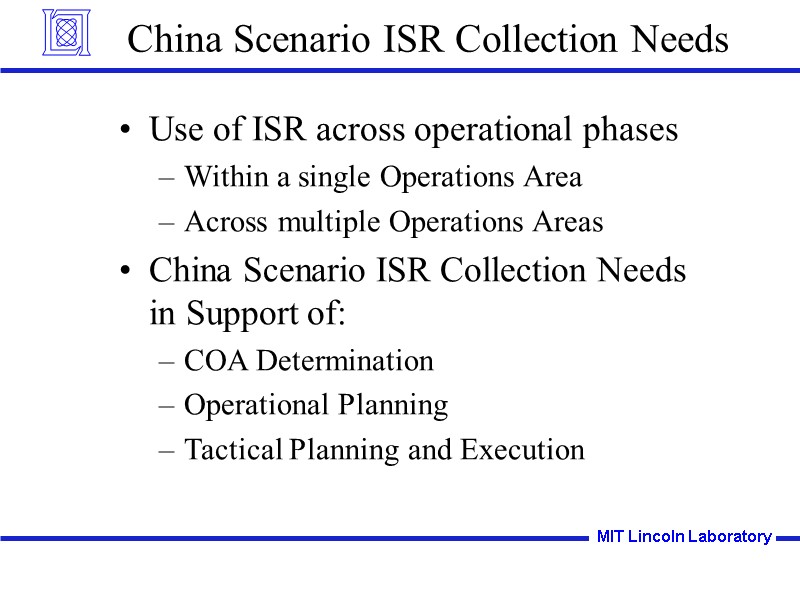
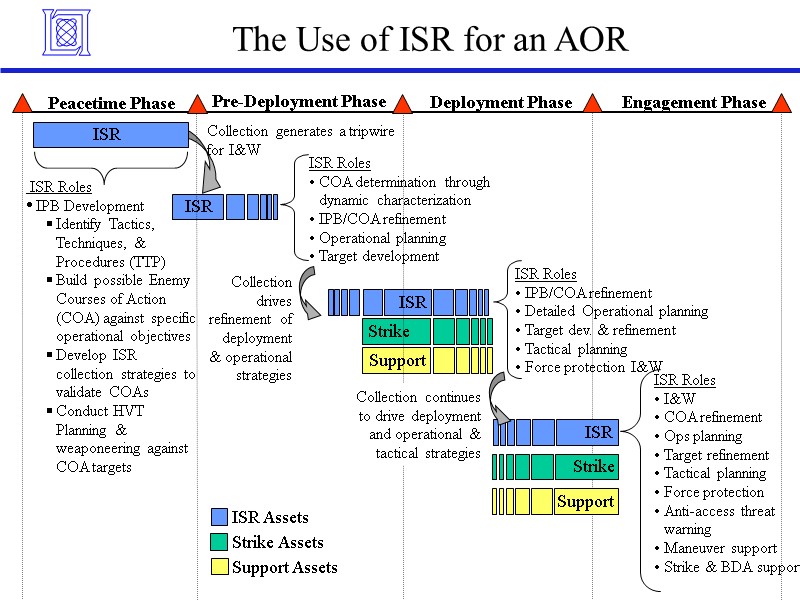
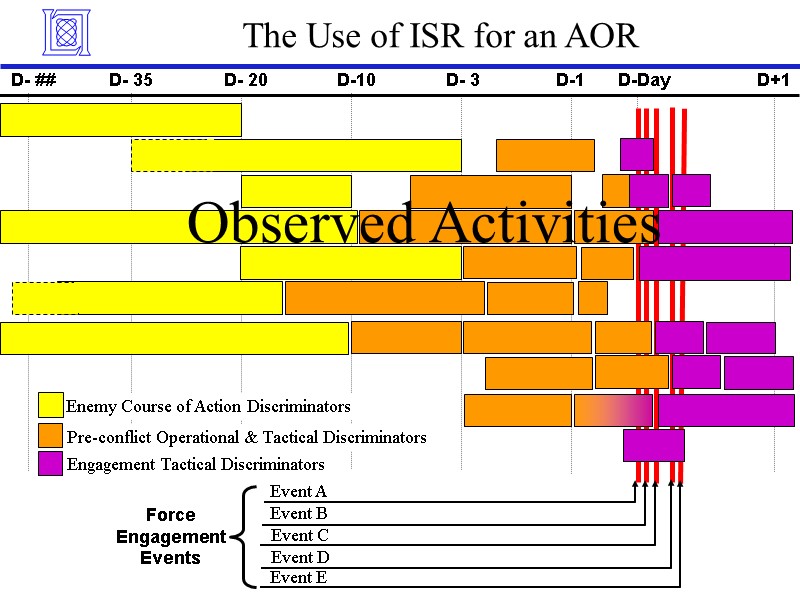
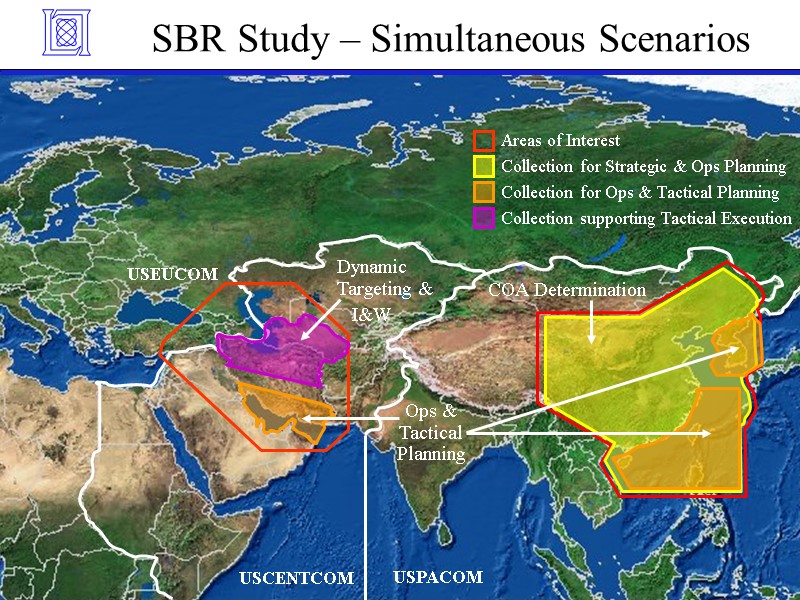
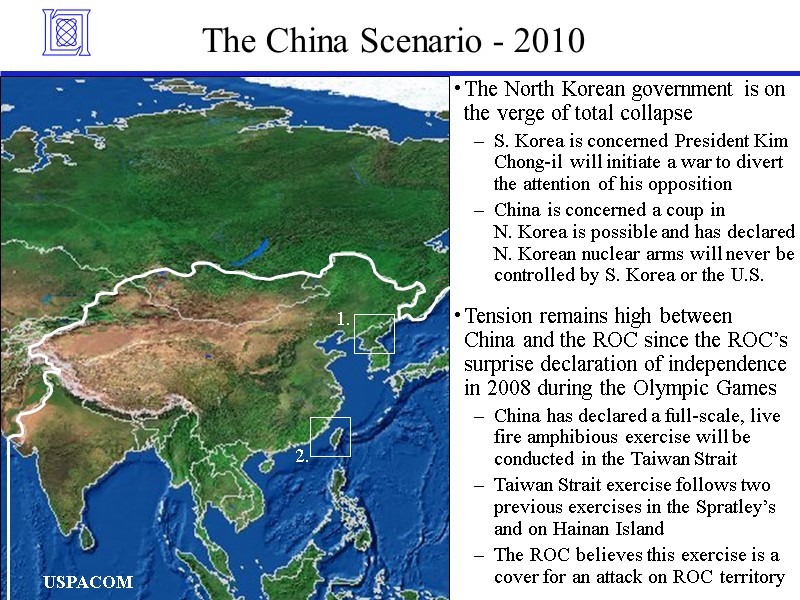
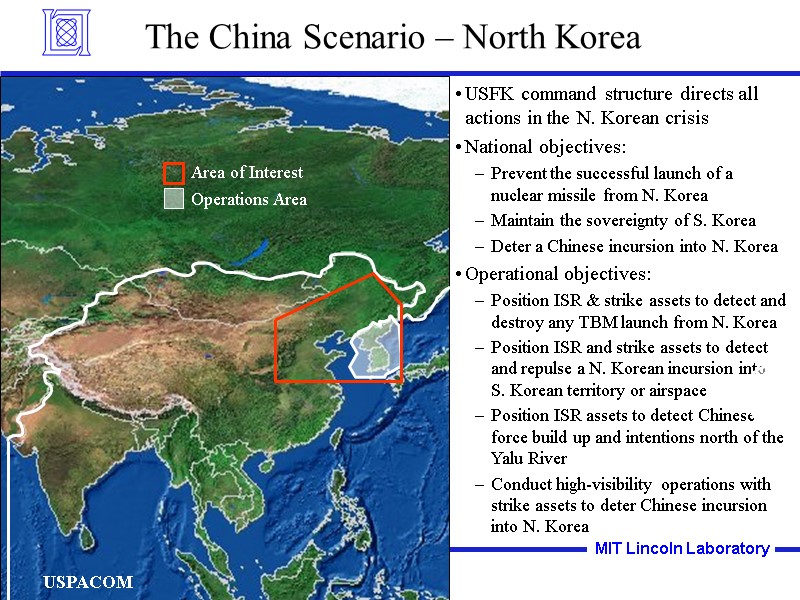
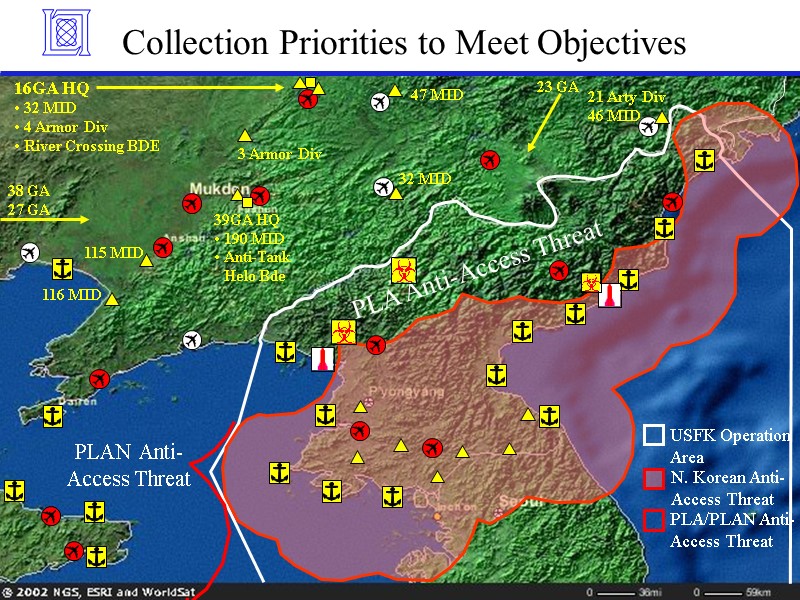
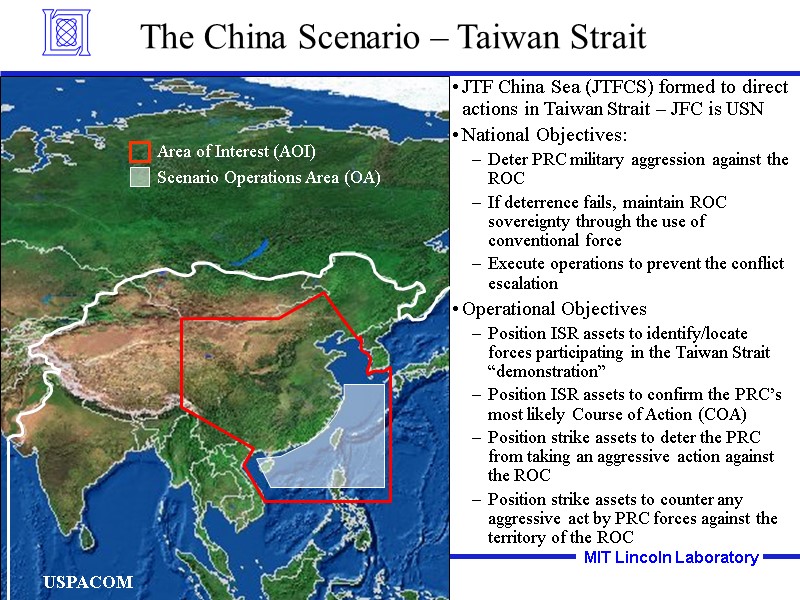
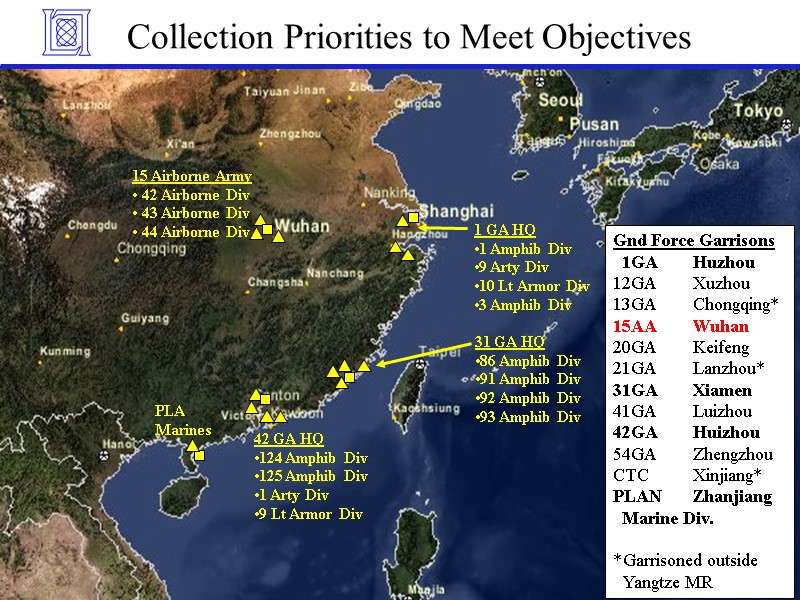
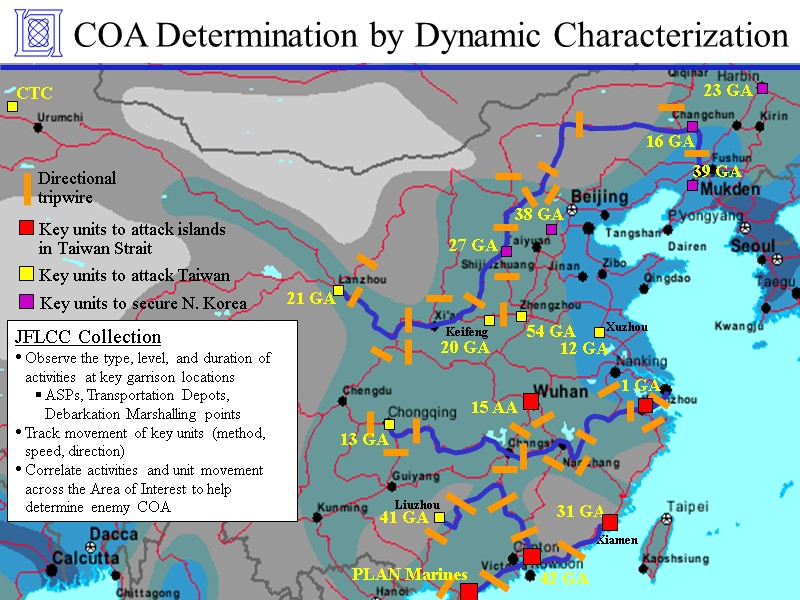
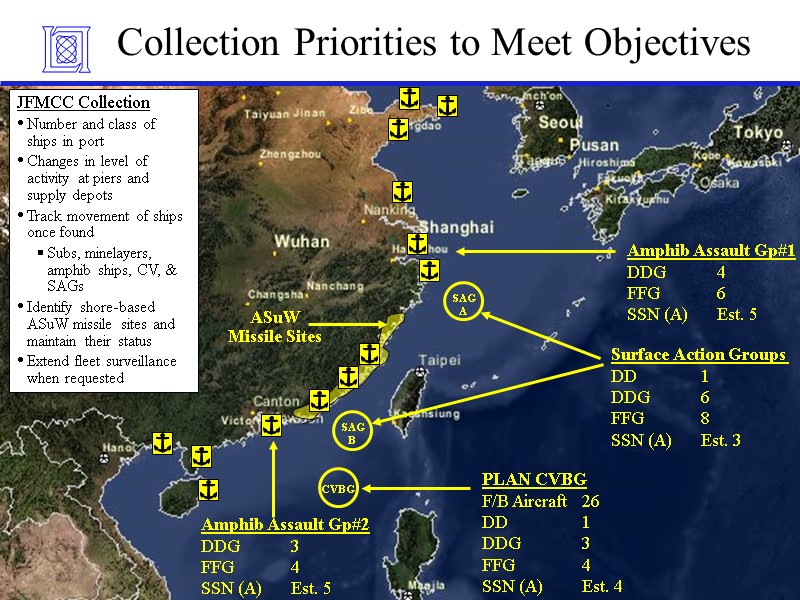
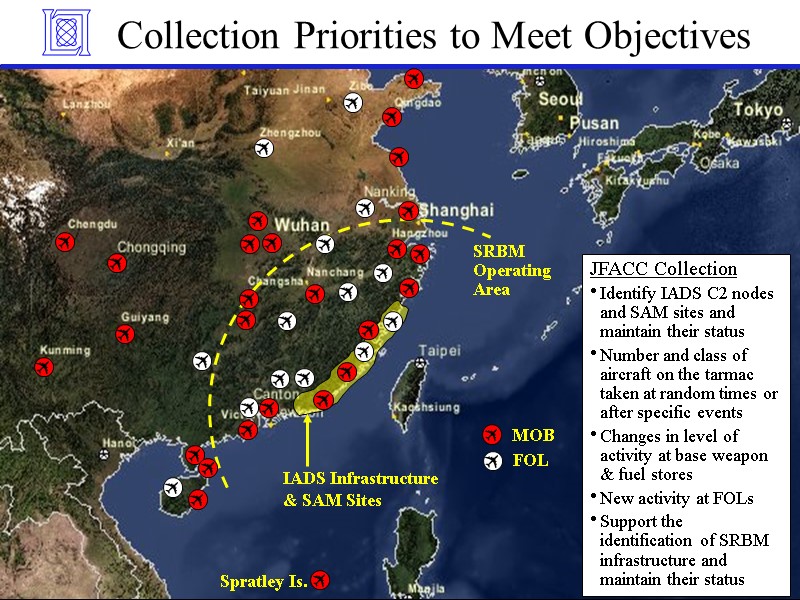
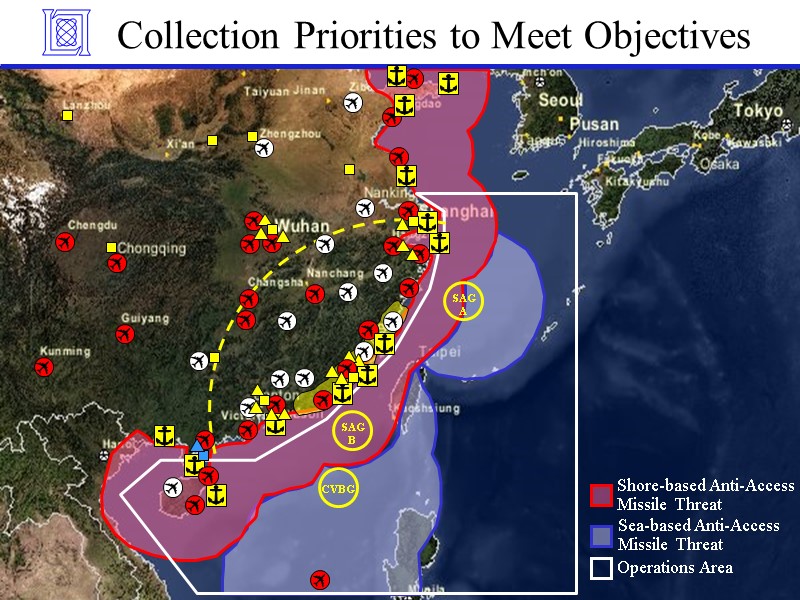
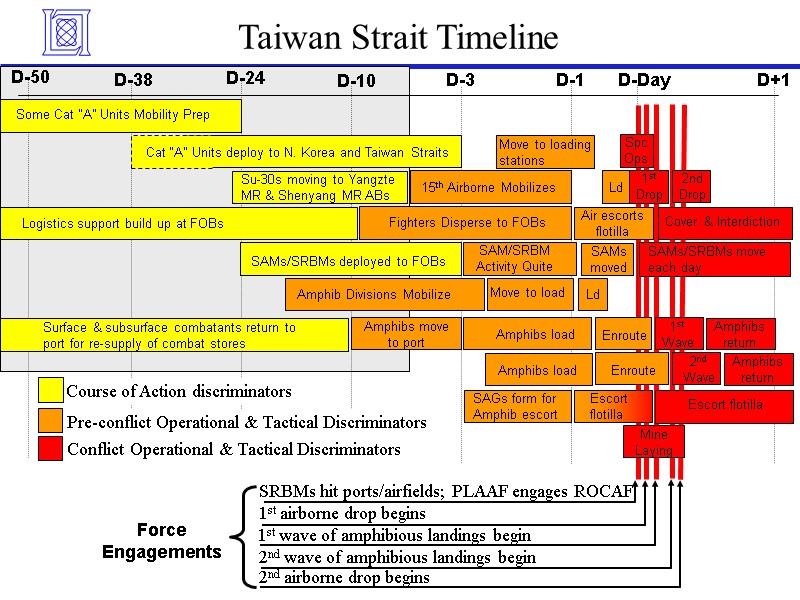
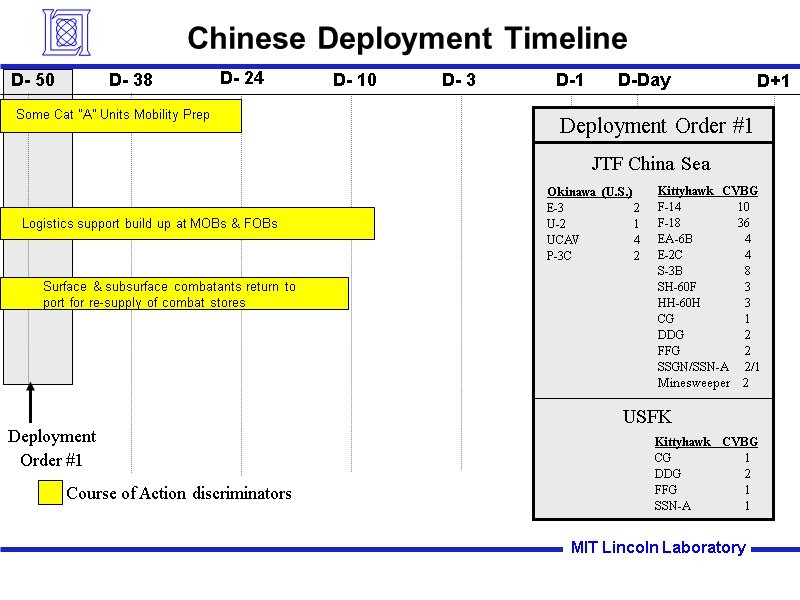
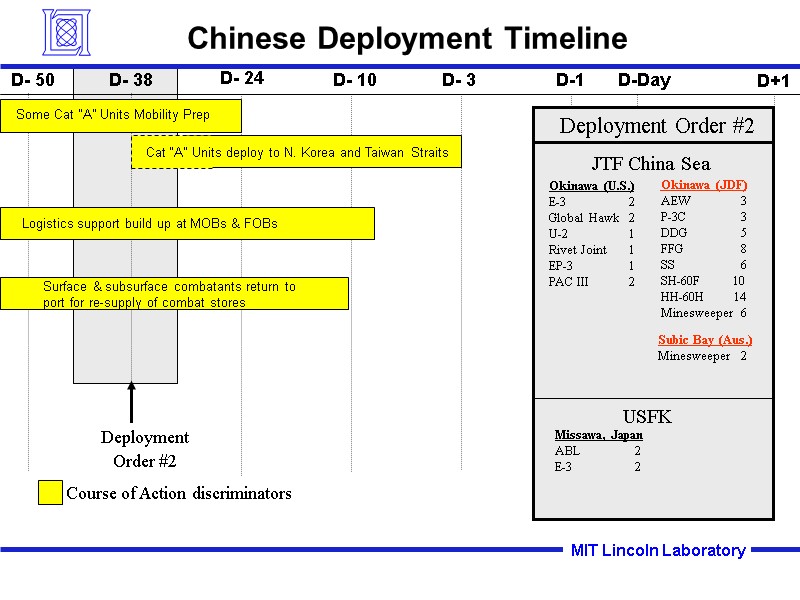
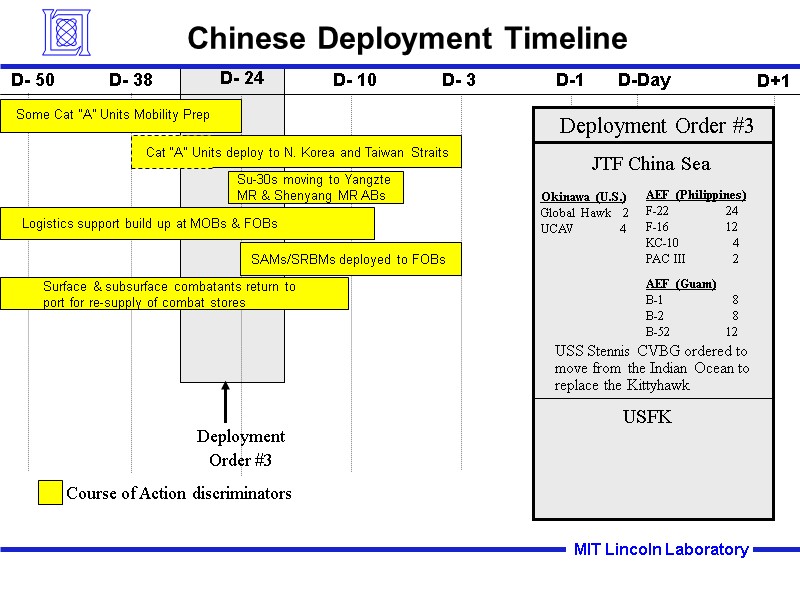
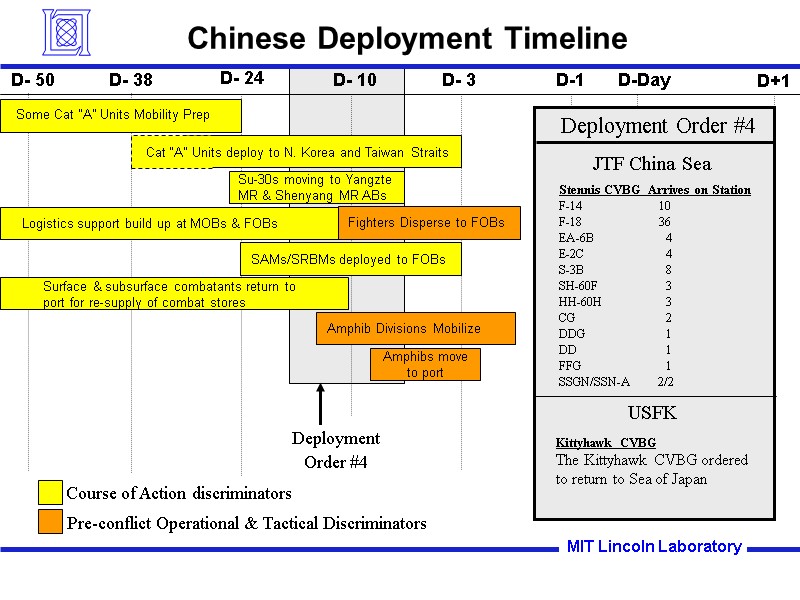
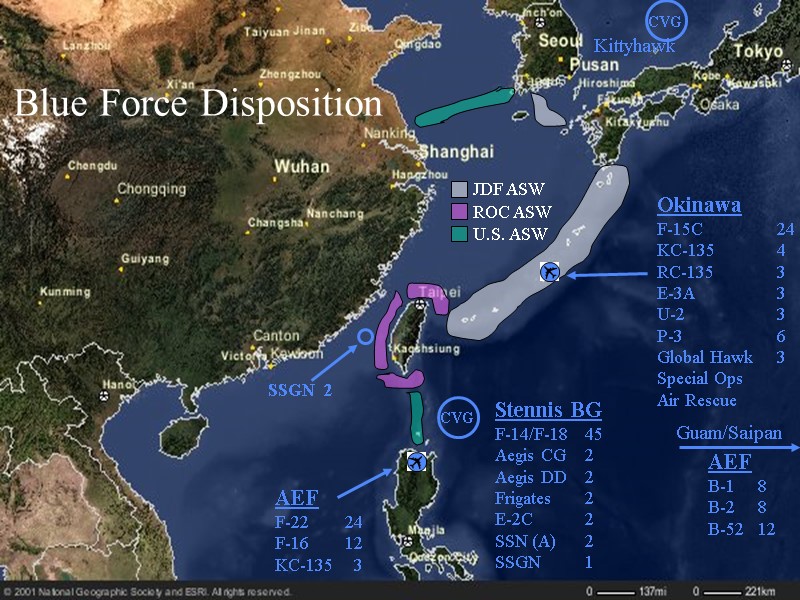
34804-china_scenario_ipb_and_collection_needs.ppt
- Количество слайдов: 19
 China Scenario ISR Collection Needs Use of ISR across operational phases Within a single Operations Area Across multiple Operations Areas China Scenario ISR Collection Needs in Support of: COA Determination Operational Planning Tactical Planning and Execution MIT Lincoln Laboratory
China Scenario ISR Collection Needs Use of ISR across operational phases Within a single Operations Area Across multiple Operations Areas China Scenario ISR Collection Needs in Support of: COA Determination Operational Planning Tactical Planning and Execution MIT Lincoln Laboratory
 The Use of ISR for an AOR
The Use of ISR for an AOR
 The Use of ISR for an AOR Force Engagement Events Event A Event B D- ## D- 35 D- 20 D- 3 D-10 D-1 D+1 D-Day Event C Event D Event E Observed Activities
The Use of ISR for an AOR Force Engagement Events Event A Event B D- ## D- 35 D- 20 D- 3 D-10 D-1 D+1 D-Day Event C Event D Event E Observed Activities
 USPACOM USCENTCOM USEUCOM SBR Study – Simultaneous Scenarios
USPACOM USCENTCOM USEUCOM SBR Study – Simultaneous Scenarios
 The China Scenario - 2010 The North Korean government is on the verge of total collapse S. Korea is concerned President Kim Chong-il will initiate a war to divert the attention of his opposition China is concerned a coup in N. Korea is possible and has declared N. Korean nuclear arms will never be controlled by S. Korea or the U.S.
The China Scenario - 2010 The North Korean government is on the verge of total collapse S. Korea is concerned President Kim Chong-il will initiate a war to divert the attention of his opposition China is concerned a coup in N. Korea is possible and has declared N. Korean nuclear arms will never be controlled by S. Korea or the U.S.
 The China Scenario – North Korea USFK command structure directs all actions in the N. Korean crisis National objectives: Prevent the successful launch of a nuclear missile from N. Korea Maintain the sovereignty of S. Korea Deter a Chinese incursion into N. Korea Operational objectives: Position ISR & strike assets to detect and destroy any TBM launch from N. Korea Position ISR and strike assets to detect and repulse a N. Korean incursion into S. Korean territory or airspace Position ISR assets to detect Chinese force build up and intentions north of the Yalu River Conduct high-visibility operations with strike assets to deter Chinese incursion into N. Korea MIT Lincoln Laboratory
The China Scenario – North Korea USFK command structure directs all actions in the N. Korean crisis National objectives: Prevent the successful launch of a nuclear missile from N. Korea Maintain the sovereignty of S. Korea Deter a Chinese incursion into N. Korea Operational objectives: Position ISR & strike assets to detect and destroy any TBM launch from N. Korea Position ISR and strike assets to detect and repulse a N. Korean incursion into S. Korean territory or airspace Position ISR assets to detect Chinese force build up and intentions north of the Yalu River Conduct high-visibility operations with strike assets to deter Chinese incursion into N. Korea MIT Lincoln Laboratory
 Collection Priorities to Meet Objectives
Collection Priorities to Meet Objectives
 MIT Lincoln Laboratory The China Scenario – Taiwan Strait JTF China Sea (JTFCS) formed to direct actions in Taiwan Strait – JFC is USN National Objectives: Deter PRC military aggression against the ROC If deterrence fails, maintain ROC sovereignty through the use of conventional force Execute operations to prevent the conflict escalation Operational Objectives Position ISR assets to identify/locate forces participating in the Taiwan Strait “demonstration” Position ISR assets to confirm the PRC’s most likely Course of Action (COA) Position strike assets to deter the PRC from taking an aggressive action against the ROC Position strike assets to counter any aggressive act by PRC forces against the territory of the ROC
MIT Lincoln Laboratory The China Scenario – Taiwan Strait JTF China Sea (JTFCS) formed to direct actions in Taiwan Strait – JFC is USN National Objectives: Deter PRC military aggression against the ROC If deterrence fails, maintain ROC sovereignty through the use of conventional force Execute operations to prevent the conflict escalation Operational Objectives Position ISR assets to identify/locate forces participating in the Taiwan Strait “demonstration” Position ISR assets to confirm the PRC’s most likely Course of Action (COA) Position strike assets to deter the PRC from taking an aggressive action against the ROC Position strike assets to counter any aggressive act by PRC forces against the territory of the ROC
 MIT Lincoln Laboratory Collection Priorities to Meet Objectives
MIT Lincoln Laboratory Collection Priorities to Meet Objectives
 MIT Lincoln Laboratory COA Determination by Dynamic Characterization JFLCC Collection Observe the type, level, and duration of activities at key garrison locations ASPs, Transportation Depots, Debarkation Marshalling points Track movement of key units (method, speed, direction) Correlate activities and unit movement across the Area of Interest to help determine enemy COA
MIT Lincoln Laboratory COA Determination by Dynamic Characterization JFLCC Collection Observe the type, level, and duration of activities at key garrison locations ASPs, Transportation Depots, Debarkation Marshalling points Track movement of key units (method, speed, direction) Correlate activities and unit movement across the Area of Interest to help determine enemy COA
 MIT Lincoln Laboratory Collection Priorities to Meet Objectives JFMCC Collection Number and class of ships in port Changes in level of activity at piers and supply depots Track movement of ships once found Subs, minelayers, amphib ships, CV, & SAGs Identify shore-based ASuW missile sites and maintain their status Extend fleet surveillance when requested
MIT Lincoln Laboratory Collection Priorities to Meet Objectives JFMCC Collection Number and class of ships in port Changes in level of activity at piers and supply depots Track movement of ships once found Subs, minelayers, amphib ships, CV, & SAGs Identify shore-based ASuW missile sites and maintain their status Extend fleet surveillance when requested
 MIT Lincoln Laboratory Collection Priorities to Meet Objectives JFACC Collection Identify IADS C2 nodes and SAM sites and maintain their status Number and class of aircraft on the tarmac taken at random times or after specific events Changes in level of activity at base weapon & fuel stores New activity at FOLs Support the identification of SRBM infrastructure and maintain their status
MIT Lincoln Laboratory Collection Priorities to Meet Objectives JFACC Collection Identify IADS C2 nodes and SAM sites and maintain their status Number and class of aircraft on the tarmac taken at random times or after specific events Changes in level of activity at base weapon & fuel stores New activity at FOLs Support the identification of SRBM infrastructure and maintain their status
 MIT Lincoln Laboratory Collection Priorities to Meet Objectives
MIT Lincoln Laboratory Collection Priorities to Meet Objectives
 Taiwan Strait Timeline
Taiwan Strait Timeline
 Chinese Deployment Timeline MIT Lincoln Laboratory
Chinese Deployment Timeline MIT Lincoln Laboratory
 Chinese Deployment Timeline MIT Lincoln Laboratory
Chinese Deployment Timeline MIT Lincoln Laboratory
 Chinese Deployment Timeline MIT Lincoln Laboratory
Chinese Deployment Timeline MIT Lincoln Laboratory
 Chinese Deployment Timeline MIT Lincoln Laboratory Fighters Disperse to FOBs
Chinese Deployment Timeline MIT Lincoln Laboratory Fighters Disperse to FOBs
 Stennis BG F-14/F-18 45 Aegis CG 2 Aegis DD 2 Frigates 2 E-2C 2 SSN (A) 2 SSGN 1 AEF B-1 8 B-2 8 B-52 12 Guam/Saipan AEF F-22 24 F-16 12 KC-135 3 SSGN 2 Kittyhawk Okinawa F-15C 24 KC-135 4 RC-135 3 E-3A 3 U-2 3 P-3 6 Global Hawk 3 Special Ops Air Rescue Blue Force Disposition
Stennis BG F-14/F-18 45 Aegis CG 2 Aegis DD 2 Frigates 2 E-2C 2 SSN (A) 2 SSGN 1 AEF B-1 8 B-2 8 B-52 12 Guam/Saipan AEF F-22 24 F-16 12 KC-135 3 SSGN 2 Kittyhawk Okinawa F-15C 24 KC-135 4 RC-135 3 E-3A 3 U-2 3 P-3 6 Global Hawk 3 Special Ops Air Rescue Blue Force Disposition
